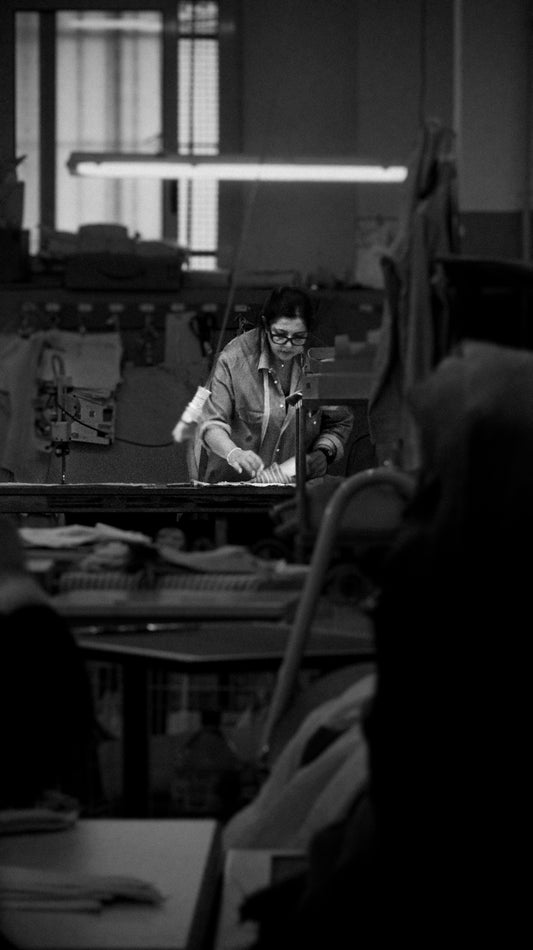
The Shirt as an Invisible Patent
Behind every sartorial detail, a smart solution
When we think of a well-made shirt, we picture the fabric, the collar, the hand that crafted it. But behind that apparent simplicity lies a complex design, composed of small sartorial “inventions.”
Invisible solutions that improve ergonomics, durability, and comfort — and that no one notices, precisely because they work so well.
Just like the best patents.
The Front Placket: structure disguised as style
That strip of fabric running along the front buttons is called the placket. It stabilizes the shirt’s center and prevents pulling or curling. But that’s not all:
-
It gives the front more rigidity, useful under a jacket
-
Its height and stitching affect the shirt’s silhouette
There are internal, external, or absent plackets — each a technical choice, not just an aesthetic one.
The Gusset: a small triangle for a long life
At the side hem, where the front meets the back, you’ll often find a tiny triangle of fabric: the gusset.
Its job is to prevent tearing at this highly stressed point, especially when sitting or bending.
It works like a keystone between two opposing forces: invisible, but essential
The Armhole: a calculated curve
A perfectly cut armhole is one of the most difficult elements to master.
-
Too wide? The shirt puckers and loses shape.
-
Too tight? It restricts movement.
The tailored approach (with a sleeve attached “in the round”) allows the arm to move freely without pulling the whole shirt upward. A technical solution, not just a stylistic one — and it’s done by hand, curve to curve.
French Seams: smooth, durable, invisible
A quality shirt can be felt from the inside: it doesn’t scratch.
That’s thanks to French seams, also known as double-fold seams:
-
All fabric edges are enclosed
-
No fraying
-
Ultra-clean appearance
They’re more time-consuming to make, but they ensure long-term comfort and durability.
The Collar Core: balance between form and feel
A good collar keeps its shape throughout the day — without feeling like armor.
It’s built with a special inner fabric called interfacing, sandwiched between the outer layers.
There are soft or stiff interlinings, sewn or fused, removable or fixed.
The result? A collar that holds up under a tie, but relaxes on an open neck.
The Silent Intelligence of Sartorial Design
In a world obsessed with appearances, the true markers of excellence lie in details you don’t see, but that serve a purpose.
A shirt isn’t just a garment — it’s a form of engineering designed around the body. And those who craft it well aren’t chasing style: they’re solving problems with grace.
That’s why a shirt, more than fashion, is an invisible patent.





